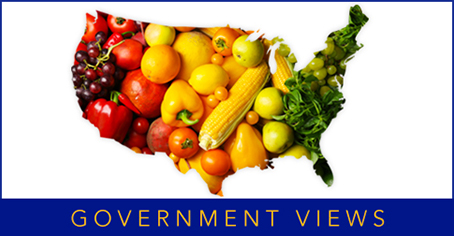Would your company like to help the U.S. Department of Agriculture (USDA) sustain American school children and families with healthy fruits, vegetables, and specialty crops—and make money at the same time?
Each year, the USDA’s Agricultural Marketing Service (AMS) purchases more than $3 billion in American-grown food for schools and both domestic and international feeding organizations. Known collectively as ‘USDA Foods,’ these wholesome, high quality food products are a vital component of our nation’s nutritional safety net.
The purchases serve a dual purpose: they support American agriculture and in turn feed millions of school children, families, and other qualified individuals through the USDA’s domestic nutrition assistance programs and international feeding programs.
All of these purchases are managed by AMS’s Commodity Procurement Program, and the agency is always looking to do business with new vendors.
What Does AMS Buy and Where Does It Come From?More than 300 different food products are purchased by AMS, in various forms and pack sizes: this includes fruits, vegetables, beans, grains, tree nuts, protein, and dairy products.
All USDA Foods must be grown, harvested, produced, and processed within the United States and its territories. These products must also meet high standards for quality and wholesomeness according to detailed food specifications.
Are Small Suppliers Eligible to Participate in the Program?
If your operation is small, no worries: selling to the USDA is still a terrific option. We recognize food contractors come in all shapes and sizes. The Commodity Procurement Program can buy hundreds of millions of pounds of product or as little as a truckload.
Nearly half of AMS’s contracts—well over $1.4 billion in contracts annually—are awarded to small businesses. Last fiscal year, AMS approved 36 new vendors with 23 of these sellers being small businesses.
Among the small businesses AMS works with are those that also qualify as socially-disadvantaged, women-owned, or service-disabled veteran-owned businesses, as well as those operating in what are categorized as “Historically Underutilized Business Zones” or HubZones as defined by the U.S. Small Business Administration. For more information on HubZones, go to https://www.sba.gov/videos/sbashubzone-program.
What Are the Benefits of Selling to USDA Foods?
As an AMS vendor, domestically produced products with your brand name can be seen and consumed by millions of people. If your company is awarded a contract, your branded product may be delivered to program participants across all 50 states, in Puerto Rico, the U.S. Virgin Islands, and into other internaTional destinations.
In addition, you will be a partner in feeding children, senior citizens, families, and individuals through schools, local foodbanks, soup kitchens, tribal organizations, disaster areas, and international food programs. Selling to the program also provides revenue, and AMS ensures vendors receive timely payment after the delivery of goods and services.
How Does a Company Become an Approved Vendor?
Suppliers must follow a multistep process to become approved USDA vendors and be eligible to submit bids or proposals to the Commodity Procurement Program. The process is not difficult, and AMS staff members are available to advise and help every step of the way.
First, subscribe to the AMS Commodity Procurement News to receive email notification of solicitations and awards. Next, carefully read the Master Solicitation for Commodity Procurement to understand the federal regulations, clauses, and provisions that affect USDA commodity contracts (this document becomes part of the vendor contract, so knowing and understanding its components is important).
Vendors must then do the following: (1) review the current purchase schedule; (2) review USDA commodity specifications and technical requirements, which explain production and processing stipulations; (3) follow the steps outlined in the qualification requirements for pro-spective contractors selling commodities to AMS; and (4) submit a vendor application package and supporting documents to begin the process.
These steps are covered in detail on the Commodity Procurement website, where prospective vendors can find a wealth of information about selling food to the USDA, including amounts paid for previous commodity contracts, a list of vendors that were previously awarded contracts, and when certain commodities will be purchased again.
If you would like to begin the approval process or if you have questions, contact Andrea Lang, new vendor and small business coordinator at NewVendor@ams.usda.gov or by phone at 202-720-4237. Regardless of the size of your firm, AMS would like to hear from you.



